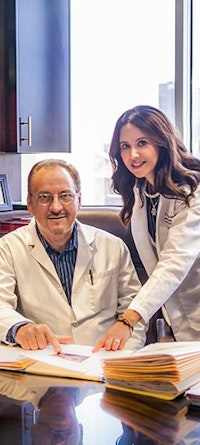IVF Overview
In vitro fertilization (IVF) treatment is the most popular and successful assisted reproductive technology (ART). An IVF cycle consists of ovulation induction through the use of fertility medications, egg retrieval, fertilization in a laboratory, and transferring embryos to the uterus.
IVF Candidacy
Patients who suffer from ovulatory dysfunction, blocked or damaged fallopian tubes, pelvic inflammatory disease, recurrent miscarriage, severe male factor infertility, or unexplained infertility may be candidates for IVF treatment. Some patients might also choose to use donated or previously frozen eggs to complete treatment.
IVF Success
IVF treatment has consistently shown the highest success rates of all assisted reproductive technologies. At The Center for Fertility and Gynecology, we have consistently maintained success rates that are higher than the national average for different age groups and infertility issues.
IVF Benefits
The most apparent benefit of IVF treatment is the improved ability to achieve a successful pregnancy. IVF can also help patients who wish to avoid passing on certain genetic conditions, it can help non-traditional families conceive, and it can allow women to preserve their eggs for the future.
IVF Costs
Our fertility practice provides individualized IVF treatment plans to each of our patients. Our expertise helps to minimize the total number of cycles required, which reduces the overall cost of treatment. We also offer flexible financing options to make IVF prices more affordable.
Mini and Natural IVF
Traditional IVF involves the use of fertility medication to encourage the production and release of multiple eggs. Patients who wish to undergo natural IVF do not take medication. We also offer mini IVF, which uses smaller doses of medication to stimulate more than one egg to grow to maturity.
History of IVF
The first IVF baby was born in 1978, and since then there have been a number of technological advances that have improved the safety and effectiveness of the procedure. Our team is trained and experienced in the latest IVF techniques, and we have helped many couples successfully conceive.
IVF Risks
IVF is a safe and effective procedure, but it is not without risks. It is important for patients to understand these risks before undergoing treatment. In addition to standard surgical risks, there is also the chance of ectopic pregnancy, ovarian hyperstimulation syndrome, and miscarriage.
After the IVF Procedure
Immediately after your IVF procedure, you should rest for the remainder of the day. In the days following the embryo transfer, you should take progesterone as instructed to increase the chances of implantation and successful pregnancy. You should also maintain a healthy lifestyle and diet.
Intravenous Lipids Therapy
If you have struggled with infertility despite multiple IVF treatments, you may qualify for intravenous lipids therapy. This option has significantly improved the rate of conception for women who have had miscarriages in the past.

















